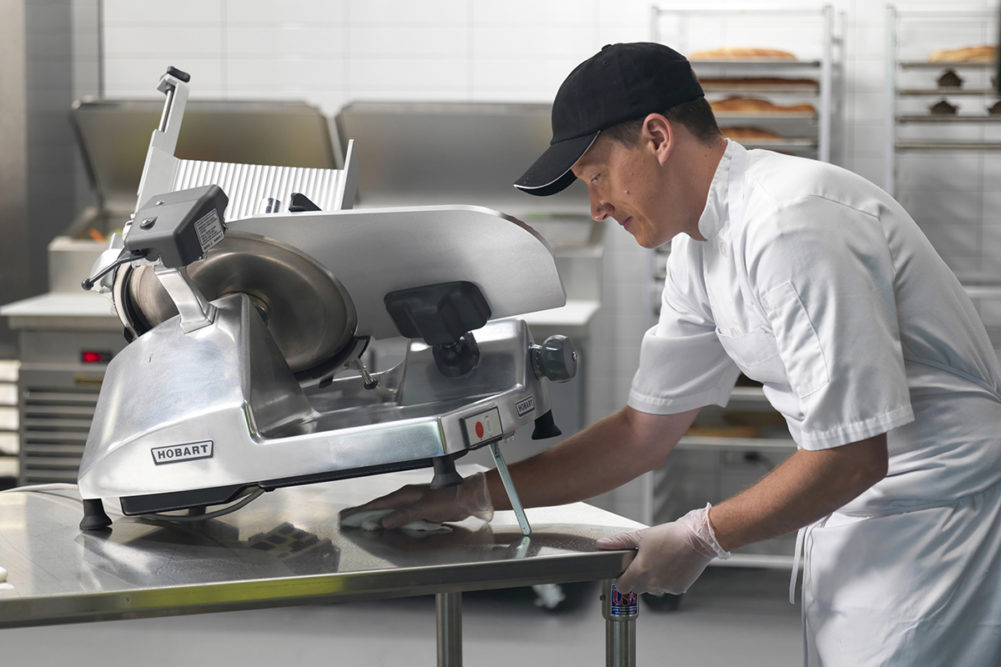- According to the FDA Food Code, food contact surfaces, including slicers, should be cleaned and sanitized at least once every four hours.
- If switching a slicer from slicing meat to slicing cheese or vegetables, or vice versa, the equipment should be cleaned and sanitized to eliminate cross-contamination.
- When cleaning a slicer, be sure that the gauge plate is fully closed before beginning.
- Other food equipment, such as meat saws and grinders, should be cleaned after use as well as between each new food product.
- When cleaning equipment, it is important to unplug the machines before beginning the process.
- Stainless steel components of equipment can be cleaned in the dishwasher to save time. Cast aluminum components may slightly change color (due to oxidation) after being washed in a dishwasher but they are still fully functional.
- Slicers without removable knives should be cleaned using a “flossing” technique, where a damp, soapy cloth is carefully woven around the knife and gently moved back and forth. Follow up flossing by spraying the knife with sanitizer from a spray bottle.
- If cleaning and sanitizing food equipment manually, use mild soap and water in a three-compartment sink, including sanitizer, to wash all removable parts of the machine. Then use a clean, soapy towel to wipe down the equipment and finish by spraying with sanitizer .
- Proper employee training is key to ensuring that correct equipment cleaning and sanitizing procedures are followed. Manufacturers provide many tools to help with this, including wall charts, cleaning instructions in the operator manual, videos and literature. Take advantage of these tools to train equipment operators and build the proper cleaning and sanitizing habits.
26
Jun
2024

